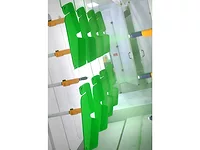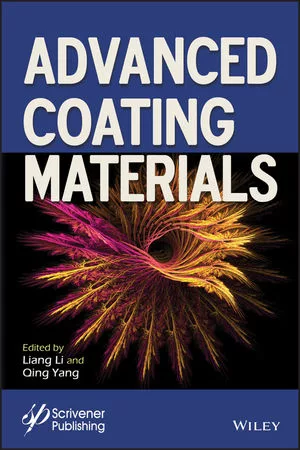Radiation-Curable Coating In Their Infancy
Radiation-curable (UV/EB) coatings are entering the new millennium in their infancy. Undoubtedly in the next 100 years they will grow up and toward maturity. While we are sure of the continued need for protection and decorative coatings in this new millennium, we are not that sure of just how manufacturing and application techniques may change.
The RadTech Europe meeting took place at the same time as the celebration of the 10-year anniversary of the unification of Germany and the removal of the wall in Berlin, which separated east and west. A new millennium had already started for Berlin and the Germans ¿ 10 years ago on Nov. 9, 1989, with the fall of the Berlin wall. Since then, unification efforts and a sense of tremendous progress is noted everywhere. The Congress reflected that attitude - heightened participation, creative ideas and genuine enthusiasm.
The theme of the RadTech Europe 99 Exhibition & Conference was "Gateway to New Horizons." The 705 conference delegates from 28 countries made this event the biggest ever held in Europe on the topic of UV- and EB-curing technology. The views expressed at RadTech Europe, which was the last of the major European Coatings conferences to be held in 1999, were a reflection of the global radiation-curing industry.
Radiation curing is basically the bombardment of a coating on a substrate with either electrons or ultraviolet rays to produce instant polymerization (curing) of the coating. It is a high-tech polymerization or curing technique.
Currently radiation-cured systems account for 4% of the coatings in Europe; this is expected to double in the next five to 10 years. Over the next decade the biggest growth rate in coatings technology is expected to be in waterborne, powder, radiation cure and reactive systems. As it is still in its infancy, the fastest growth rate may very well be seen in the area of radiation-curable coatings. By contrast, powder-coating technology has matured rather quickly in the past decades and is approaching maturity. The same may be said of the high- solids markets.
A very important point was made by one of the RadTech Europe speakers. He noted that we break out our coatings categories in traditional terms and try to apply statistical values to them - high solids, waterborne, powder, radcure, etc. In reality, however, we are seeing hybrids emerging and growing in the industry, such as UV-curable powder coating and waterborne-UV resins. This does, and will, make classification and growth rates rather nebulous in the future. The industry needs to recognize that we are already dealing with hybrids and hybrid technology.
In Europe, there has been an average growth rate of over 20% yearly in radiation-cured coatings since 1982. The current rate is around 6% primarily due to the economic conditions, which have prevailed in Europe. The world-wide radiation curable market is currently seen at approximately $1.3 billion; approximately 40% of this is from the European market. Within Europe, the major players are Germany, Italy, and the United Kingdom, and they account for approximately two-thirds of the European market. The remainder is divided among the Nordic countries, France and the remainder of Europe.
The major end-use markets for radiation-curable materials are coatings, ink, electronics and adhesives. The coatings usage is primarily focused on wood, plastic, glass, metal and paper. For the European community, industrial coatings comprise about two-thirds of the market, overprint varnishes approximately 20% and printing ink nearly 9%.
Effort is being placed on UV-curable powder coatings, and waterborne UV-curable resins for the furniture business, printing ink, optical fiber coatings, coil coating opportunities, silicone release coatings and pressure-sensitive adhesives. All are seen as having growth opportunity. No doubt other curing methods will also be available such as X-ray, ion beam and lasers to provide the energy necessary for instant polymerization and curing.
In terms of end use applications, in North America the biggest application is graphics, which includes printing ink and overprint varnishes, followed by industrial coatings, opto-electronics and adhesives. In Europe the industrial wood and furniture varnish is the largest application area, followed by printing ink, electronics and adhesives. In Japan, the biggest market areas are electronics and fiber optics, followed by industrial printing ink and adhesives. The remainder of the Far East market (which accounts for about 17% of the total world production) is focused on industrial coatings followed by printing ink, electronics and adhesives. The Asian market, despite the downturn in economy, has shown a 5%+ growth per year in radiation-curing products. Coatings for metal and plastics are growing in all geographic regions.
Priorities have also changed for radiation-curable coatings. In the 1980s the focus was determined by VOC reductions as the highest priority. Today that is the lowest priority; most important is fast curing with high surface quality characteristics. Initially the radiation-curable systems were 100% liquid systems using liquid resins and liquid reactive diluents. Today we have waterborne-UV coatings and powder UV systems. In addition, UV crosslinking of solid resins is being used in the form of hotmelts for laminations.
The 120 papers presented at the conference covered the following topics: wood and furniture applications, automotive applications, graphic arts, adhesives and lamination and UV-curable powder coatings. The program included papers from end users, suppliers and manufacturers.
The "Innovation Award," sponsored by Ciba Specialty Chemicals, was presented to Barteld de Ruiter from TNO for three new fields of application for radiation curing. The first new application field dealt with the use of UV- or g-cured matrix systems for the controlled release of insect pheromones. The second new application dealt with the use of UV-curable materials in coatings applied to plastic parts during injection moulding. The transfer of the coating from the mould to the part with all its adhesion aspects is the true challenge here. The third application dealt with low-temperature curable powder coatings. Although this is not a new application, the approach used was completely different from what has been presented or published elsewhere.
The "Applications Award," sponsored by Cray Valley, was presented to Ulla Anderson, Danmarks Nationalbank and Gary Powder, Securency PTY for the application of UV-curable special printing ink when printing banknotes.
There were 38 international exhibitors from the United States, Germany, Great Britain, Italy, the Netherlands, Belgium and France showing a variety of new products as well as application and curing equipment, and testing and measuring instrumentation.
One of the biggest highlights of the exhibition was the Application Centre, where the application technology was demonstrated. TRIAB AB from Sweden showed a facility for the powder coating of medium-density fiberboard (MDF) slabs. Powder coating from DuPont Performance Coatings and UV equipment from Fusion UV systems were used. MDF is considered the leading wood-based substrate candidate for UV-curable powder coating. Nordson showed a machine for label-printing and IST METZ GmbH showed a facility for UV-curing of silk-screen printing ink on PVC.
With over 700 registered attendees, exhibitor enthusiasm was running very high. Comments heard directly and overheard at breaks and in the elevators all stated that it was the best RadTech Europe ever. The exhibitors were kept very busy and, by all accounts and measures, this event was an overwhelming success. This suggests that the RadTech North America meeting to be held in April will also be a major success.
For more information on the papers presented at the Congress, e-mail Dr. Jürg Seidel at: radtech.seidel@bluewin.ch.
RadTech 2000 is scheduled for April 9-12 in Baltimore. For more information, contact Goyer Management Intl., PO Box 54464, Cincinnati, OH 45254; phone 513/624.9988; fax 513/624.0601, Attn. Anne Goyer; or visit www.radtech.org.
Links
Looking for a reprint of this article?
From high-res PDFs to custom plaques, order your copy today!






